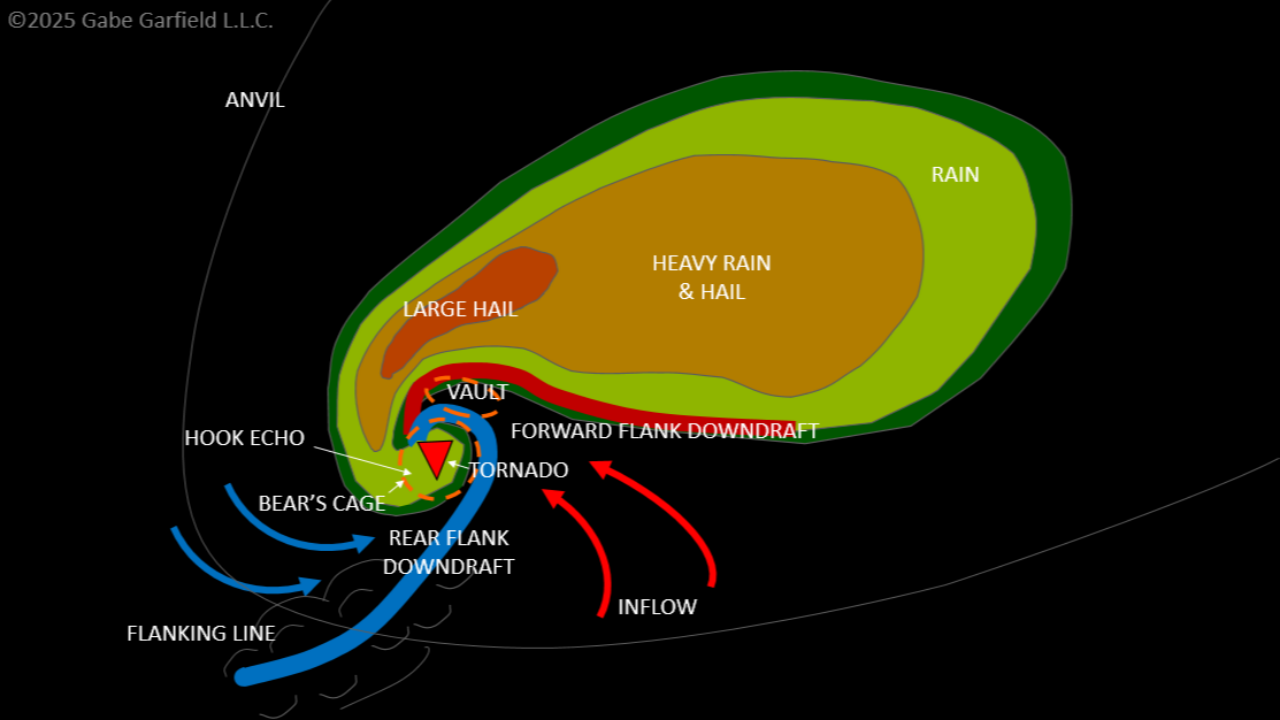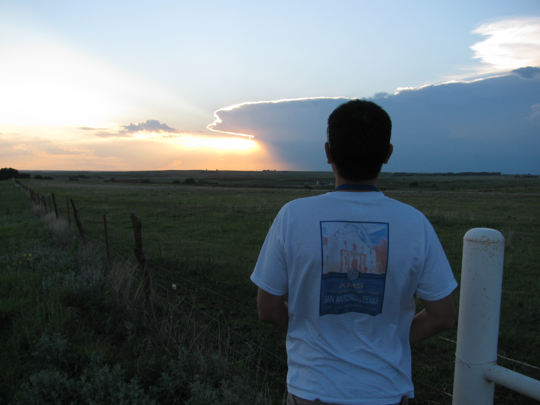From Beginner to Tornado Chaser: 3 Steps to Start Strong

Many people ask me, “Where can I learn how to chase storms?” It’s a great question, but if you look online, you won’t find a clear, straightforward answer. Most aspiring storm chasers have to piece together information from various sources and learn through trial and error in the field. While that hands-on approach can be rewarding, it often leads to mistakes—missing tornadoes or even getting into dangerous situations.
To help you get started more effectively, I’ve put together a simple plan to become a skilled tornado chaser as quickly as possible. Here are the three key steps:
- Build your knowledge and skills
- Prepare for the chase
- Start chasing storms
Before we dig into the details, let’s talk about why learning by trial and error can hold you back—and even put you in danger.
(Stay tuned for a big announcement at the end of this newsletter!)
The Pitfalls of Learning to Chase Storms by Trial and Error
I grew up in the Twister era of storm chasers, and I’ll be honest—it lit a fire in me to chase storms myself. When I was in 8th grade, the movie came out on VHS, and I begged my parents to rent it. I even pretended to be sick so I could keep it longer and watch it again and again.
Still, I wanted to see a real tornado, not just a movie one. The problem was, I couldn’t drive yet, and all I knew was that tornadoes formed in the southwest part of a storm. Somehow, I talked my dad into taking me chasing anyway. On June 8, 1998, we went after a storm in central Oklahoma. Near Chickasha, we saw a huge supercell with a spinning wall cloud and giant hail the size of baseballs. We stopped chasing near Norman, and later that storm dropped tornadoes in eastern Oklahoma.

Looking back, we had no idea what we were doing. It’s a miracle nothing worse happened! I’m pretty sure we drove right under that spinning wall cloud—thank goodness we didn’t get hurt. Our next chase was in March 2000, and we still didn’t have a clue. We followed a news car for a bit, but they zoomed away and left us behind.
For three whole chasing seasons after that, I didn’t see a single tornado. I tried so hard, but it was super frustrating. Then, on September 18, 2002, I finally saw one near Blackwell, Oklahoma. All that effort paid off—but it was mostly luck. I still wasn’t good at chasing. I kept missing tornadoes and making stupid mistakes.
It wasn’t until I took meteorology classes at the University of Oklahoma and got years of practice that I really figured it out. I’d love to save you from all that struggle, so here’s a simple plan to learn storm chasing the fast way.
3 Steps to Becoming a Skilled Storm Chaser
- Build Your Knowledge and Skills
The foundation of storm chasing is understanding tornadoes and mastering weather forecasting. Start by learning where and when tornadoes typically form. Next, study a detailed diagram of a supercell—the type of storm that produces tornadoes. Familiarize yourself with its key features, like the updraft, downdraft, and mesocyclone. This knowledge helps you stay safe and track a storm’s development. Keep in mind that real storms often deviate from textbook models, but knowing the ideal supercell structure gives you a solid baseline for interpreting what you see in the sky.

To reinforce your learning, watch tornado chasing videos on YouTube. Test your skills by guessing the direction the videographer is facing based on the storm’s appearance. You can also download radar software like GRLevel2 or RadarScope, which lets you explore historical radar data and compare it to what storms look like in real life.
Forecasting is the next critical skill. Focus on the physical processes that create tornado-allowing conditions, then learn to interpret surface maps, upper-air charts, Skew-T diagrams, and hodographs. If this is new to you, consider enrolling in my free short course, Tornado Forecasting Foundations, for a structured introduction.
- Prepare for the Chase
With a solid grasp of forecasting, it’s time to gear up. First, secure reliable equipment. You’ll need a sturdy vehicle with excellent tires—ideally one with four-wheel drive, as muddy roads are common during chases. A smartphone or tablet is essential for real-time data access. Cameras and tripods are up to you; you can spend a little or a lot, but quality gear pays off. I still regret not having better equipment for some unforgettable tornadoes I’ve witnessed.
Decide if you want a chase partner. While optional, I highly recommend it. A partner can share driving duties and watch for hazards—like a tornado sneaking up behind you—making the experience safer and more enjoyable. Choose someone calm under pressure, as chasing can be intense and stressful.

- Start Chasing Storms
The best way to learn is by doing. If you’ve built your forecasting skills, you’ll know when conditions are ripe for a chase. Not confident yet? The Storm Prediction Center’s convective outlooks are an excellent guide for picking chase days. If you live in the Plains, you might chase for an afternoon when storms are nearby. For those outside Tornado Alley—like me—a chase vacation is the way to go. Plan for at least a week, ideally in May or June, with the last two weeks of May offering the best odds of spotting a tornado if you’ve followed these steps.
As a beginner, chase conservatively. I strongly advise against getting closer than a mile to a tornado. Close-range chasing is a personal choice, but it’s risky—especially early on. It’s dangerous if you’re not yet adept at reading storms, it’s stressful being near the circulation, and it might not even be fun. From a safer distance, you can take in the storm’s full beauty, which is often breathtaking.
These 3 steps are a great start, but if you’re ready to master every detail of storm chasing, I’ve got great news.
The Tornado Chaser Transformation Drops Soon!
Get ready to chase your tornado chasing dreams with the launch of my new online course, The Tornado Chaser Transformation, hitting the web on March 19th! I’ve poured everything I’ve ever learned about storm chasing into this 8-hour deep dive—think of it as your personal masterclass to go from curious beginner to confident chaser, or to finally stop missing those elusive tornadoes. Whether you’re just starting out or tired of busting, this course has it all: a hefty dose of meteorology, my complete tornado chasing process that’s led me to over 200 tornadoes, and the safety know-how I’ve honed over years in the field. You can binge it in a weekend and walk away ready to tackle the storms like a pro.
This isn’t just a course—it’s a transformation for anyone who’s ever dreamed of chasing tornadoes. I’ve left no stone unturned, packing in every tip, trick, and hard-earned lesson I’ve gathered. From understanding the skies to staying safe while you chase, it’s designed to take you from zero to hero—maybe even spotting your first tornado this year—or help you level up if you’re already out there. Mark your calendars for March 19th, and get ready to turn your passion into action with The Tornado Chaser Transformation. Pre-sale details are dropping soon in an upcoming email, so keep your eyes peeled for your exclusive shot to jump in early.
Well, that's all for now. Hope you enjoyed it!
- Gabe Garfield
WxGabe on X/YouTube/Facebook/Instagram
